The Way It Is/ Simon Pagenaud's riseby Gordon Kirby |
 It's taken Simon Pagenaud ten years of hard work in America to arrive where he is today poised to win his first IndyCar championship. Ten years ago Pagenaud won the Atlantic championship after a season-long duel with Graham Rahal. Since then Pagenaud has traveled a long, circuitous road from Champ Car to the ALMS and WEC series before finding a place in IndyCar with Sam Schmidt's team and making the move last year to Team Penske.
It's taken Simon Pagenaud ten years of hard work in America to arrive where he is today poised to win his first IndyCar championship. Ten years ago Pagenaud won the Atlantic championship after a season-long duel with Graham Rahal. Since then Pagenaud has traveled a long, circuitous road from Champ Car to the ALMS and WEC series before finding a place in IndyCar with Sam Schmidt's team and making the move last year to Team Penske.
Pagenaud was born and raised in Montmorillon in the Poitou-Charentes region of western France. He was a fan of cars as a kid and learned to drive at a young age. "I was always interested in cars," Simon says. "When I was a child I used to play with cars all the time. When I was at school after lunch I would sit in my dad's car and pretend I was driving. So I've always loved cars. "Ayrton Senna is somebody who got me attracted to the sport. He was flamboyant, he was mythical and I remember sitting with my dad at home watching Senna on TV. "My dad taught me how to drive when I was four years old sitting on his lap. He taught me how to steer a car in a parking lot and how to use the pedals and at seven years old I started go-karting. It was just for fun, as a hobby. 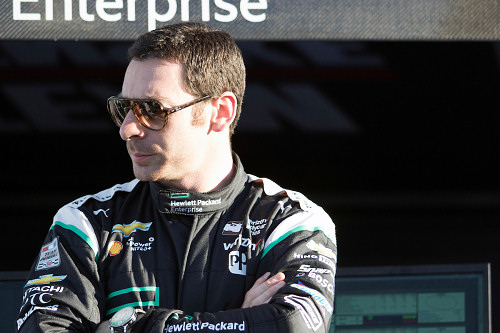 © LAT USA "Then we went to the next level. I owned two chassis and two engines until I was seventeen. So I learned how to do it the hard way. "It seemed like it was very natural. It was in my blood. There was a point where I didn't know what I wanted to do except for racing. It was very blurry for me outside of racing. That's what I wanted to do." Pagenaud graduated to cars after winning a Renault Elf scholarship and in 2004 he finished second in the Formula Renault European championship. "At sixteen I managed to win the Renault Elf driving competition run by the FFSA," he grins. "I won sponsorship from Elf which enabled me to start racing cars in Formula Renault. The whole time in Europe I had support from manufacturers because I was doing well in the championships. So I was able to keep moving up but in 2005 I had a really difficult season." Pagenaud struggled in the World Series by Renault in 2005 and at that stage his father suggested they start a business together to help generate sponsorship for his budding racing career. "My dad saw my drive and determination and decided to help me," Simon relates. "We started a driving school business and it was soon generating revenue. We had a fleet of twelve cars at a little track only thirty kilometers from my house and it went well. "In 2006 I came to America, basically with sponsorship from the driving school and won the Atlantic championship. And that got me started racing professionally in America." 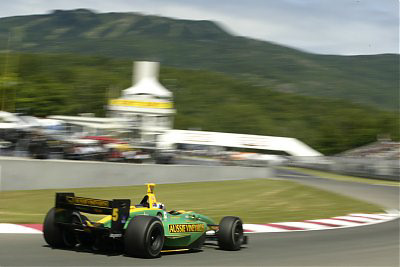 © LAT USA "The jump from Atlantic to Champ Car was not easy because the Atlantic car was a great car but it was not powerful," Simon recalls. "The Champ Car back then was very powerful so it was a big jump and it took me the year to get used to the car. "Derrick Walker made a huge difference to me. When I met him I was a good driver but I was not a complete driver. He made me complete by teaching me and talking to me." Pagenaud recorded a string of fourths, fifths and sixths, finishing the year eighth in Champ Car points. "I had a good season, showed a lot of speed. But then Derrick lost his sponsorship and Champ Car merged with IRL and nobody knew me on the IndyCar side. I hadn't proved myself in front of their eyes. "There were some options back in Europe in sports cars. I did a test with Team Creation at Estoril. It went well and they offered me a drive but then Gil de Ferran offered me a drive in his LMP1 car in the ALMS series. "I wanted to keep my career going in America and I strongly believe that things happen for a reason. You meet people on your way through life and there are a few people who make a big difference. At every intersection you have to decide to go left or right and you make many of those decisions based on the people you meet. And Gil was for sure one of those people. "I thought people in America looked on you more for your talent and how you handle yourself in public," Simon added. "Being a European driver racing in a European series was almost a different job. The European teams expect you to adapt to the car and their way of doing things. They try to make a perfect car on paper and then you have to adapt to it. If you don't, they will go and get another driver. "In America, my opinion is that if you show some talent the teams will work with you to make the car suit you. They will build the team around you and I believed my best chance was in America because I have strong technical and development skills." In 2009 Pagenaud co-drove with de Ferran in the Brazilian's short-lived ALMS team. At the wheel of a powerful, high grip Acura LMP1 car de Ferran and Pagenaud finished second in the ALMS championship. 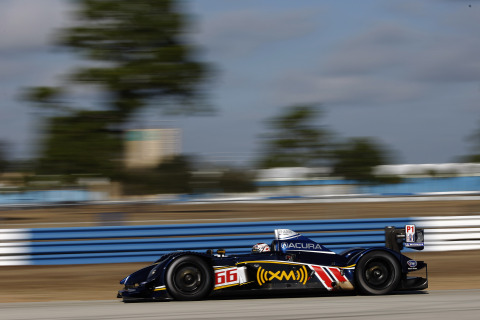 © LAT USA "I learned about tires. We developed a new front tire for Michelin for that car. Every week we had something new on the car so it was very interesting to me. I was always fishing for information from Gil. He was like a sponge for me. We had a good time together and got to know each other. That was a big step in my life." In 2010 and '11 Pagenaud moved on to drive similar Acura LMP1 cars for Duncan Dayton's Highcroft team in the ALMS series. He also drove for Peugeot's factory P1 Le Mans team and in a few other European long-distance races. During these years Pagenaud gained a tremendous amount of experience and confidence. "I had the opportunity to drive for Peugeot at home in France and for Highcroft here in America," he relates. "With Peugeot I did lots of testing on big tracks. Every two weeks we tested at Paul Ricard, driving at night and driving during the day. I did a lot of miles for Peugeot and managed to put to work everything Gil had taught me. "I was also measuring myself against Formula 1 drivers because all my teammates were F1 drivers. I had eleven teammates and they were all from Formula 1 and I could see when we were doing the debriefs together with guys like Alexander Wurz, Stefan Sarrazin and Marc Genet, who was a Ferrari test driver at the time, that I was performing and understanding the car at their level. "You learn where your strengths and weaknesses are and you see their relationship with the team. So you develop as a driver. It was awesome for measuring myself. Those guys were my sources and my information. That was a really good time." Pagenaud finished second at Le Mans with Peugeot in 2011 while he and experienced teammate David Brabham won the ALMS title with Highcroft in 2010. They also finished second at Sebring in 2011 with Marino Franchitti joining them. "Highcroft was a good team," Pagenaud says. "Duncan was a pure racer. He loved racing and it was a fun team to drive for. It was a very well-organized team. "I met my engineer Ben (Bretzman) when I was at Highcroft. Ben was an engineer at Highcroft when I joined the team. David Brabham was the lead driver and he was my teammate at Peugeot as well, so that was also a very good relationship. I also developed a big trust in Ben from 2010 with Highcroft and we've worked together since then." 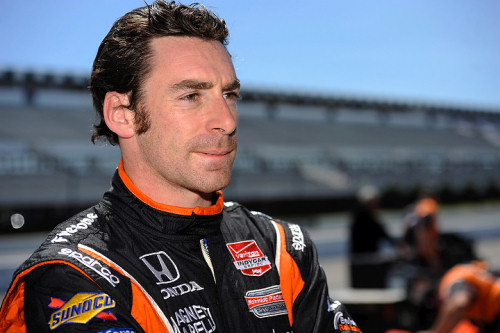 © LAT USA "I owe it to Honda," Pagenaud says about making the break into IndyCar. "Erik Berkman and Steve Erikson were a tremendous help to my career. We built a relationship together and I won a lot of races with the Honda engine. Highcroft started doing development on the V6 turbo that's now in the P2 car and they asked me to do some testing for them that winter. They also came out with a new car for 2011 and we finished second at Sebring between the Peugeot diesels. "During 2011 I did a lot of development work for Honda. I drove every type of grass roots racing car Honda was involved with. I drove the Honda Formula F car, the Honda CVI, the Pike's Peak car and the Acura P1 car at Sebring. There was also a go-kart engine they built that I drove and raced. I also drove a rally car. The goal was to showcase what Honda was doing in many different series with good quality equipment at reasonable cost. "So that was a transition year for me. Except for Le Mans and Sebring I had a pretty small racing program. In the meantime I was working with Honda to get back into IndyCar. I was pressuring Honda to get me into IndyCar and Sam Schmidt was interested in me after I did a race at Barber and did pretty well. I finished eighth in my first IndyCar race. "After that Sam Schmidt had a contract ready. All he needed was for Honda to approve it. They did and that got me to IndyCar with a development driver status." Pagenaud finished second at Long Beach in 2012 and made the podium in three more races finishing fifth in IndyCar points. "The first year went pretty well," he remarks. "It was a bit difficult because I had to adjust to driving an Indy car. You've got to be so much more on edge driving these cars. The intensity of driving these cars is different than driving a sports car. It's not that sports cars aren't intense, but it's a different level of intensity. I needed a bit of time to get back to that, which I did pretty quickly. "Working with Schmidt was very interesting. It's a very human team with very good people. They have limited resources but some awesome people and they can extract the best out of the situation. Ben came with me to Schmidt and he and the other engineers were very motivated. We finished fifth in the championship and it opened the door to Team Penske." Pagenaud scored his first IndyCar win in Detroit in 2013 with Schmidt then won again in Baltimore on his way to an impressive third in the championship. In 2014 he won on the road course at Indianapolis and in Houston and was fifth in IndyCar points. That was more than enough to convince Roger Penske to hire Pagenaud for 2015. "I was in touch with Tim Cindric since the days of driving the Acura P1 car for Gil," Simon says. "In those days Penske ran the Porsche Spyder P2 cars and Roger and the team noticed me. Gil told Roger he had to hire me and I stayed in contact with Tim and the team. When I got to IndyCar and showed what I could do in one of these cars Roger and the team made everything happen and here I am." 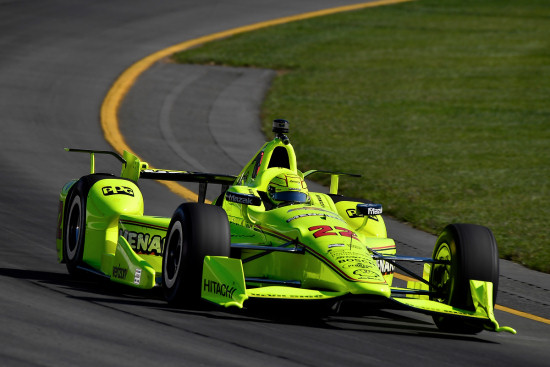 © LAT USA "I enjoy what's been happening this year with the aero kit," he said. "At the start I was worried about safety and I voiced myself really loud about it. Originally, I didn't like the idea of the bumper. But now they've strengthened it and seeing how IndyCar handled it, they did a great job with strengthening the pods and adding the tethers. So I'm good with safety. "I've enjoyed the development of the aero kit with Chevy. There was the curiosity to see what Honda was going to bring and who was going to be the best. I enjoyed that during the winter and I thought it was interesting to see the differences in the aero kits going into the season. "I think now is when the aero kit is the most relevant. You see Honda's package is very strong on superspeedways. Yes, they're struggling on the road courses where the Chevy package is very strong, but they won the biggest race of the year at Indianapolis. Maybe Honda focused on Indy. "I enjoy the way the cars are now with a lot of downforce on the road courses. On the superspeedways I think a lower amount of downforce is better because it's more fun to drive and makes for good racing. "I think the different approaches taken by the two manufacturers is interesting and the differences make for more passing. I've never passed so many cars as I have this year. So maybe the aero kits are not so bad in the end because there are different drag and downforce levels and you can sometimes do something with trimming the car that actually helps you win the race. That's the game and I love it. Like at Indy, we went there with low downforce and nobody could pass me on the straight." Pagenaud doesn't like IndyCar's expected move to a common aero kit for next year. He would also like to see more freedom in IndyCar's engine development rules. "I would hate to see a common aero kit for everybody because it takes everything I've talked about away from it and it takes the development side away as well. We can work on the engine side during the winter and I wish we could do more. I wish we could have traction control because it's a development tool. I wish we could do as much as we want with the engine, but I guess that's not happening. "I'd like to have more power but if we did the cars would be way too fast. We have so much downforce that the cars are cornering faster than they did ten years ago which is physically demanding. We're at a very high level of g loads now, but it's great. I love it." Pagenaud believes science and technology will find ways to enable the drivers to withstand even higher g loads and cornering speeds. "Maybe we'll find a way to help the human body go faster," he mused. "Maybe there are ways to train the drivers better and improve the driver's head and neck placement and restraints. Maybe that side of the sport needs development to make us go beyond what's in our genes. "Athletes in other sports like tennis are very pushed and they have their physical trainers on the road with them. It's happening here, but not as fast."  © LAT USA "I don't have a concept in mind," he said. "I'm not qualified for that. I'm very much for safety. Obviously, we're traveling at more than 200 mph and the human body is not made for that. So anything to improve safety is welcome. Better head protection would be fantastic and whatever they find, I'm happy with. It's complicated to do it right but we found ways to get pilots out of the cockpits of fighter jets. "The human mind is fantastic at finding solutions and I'm convinced we can find a way. We've just got to be open-minded. Maybe there's something that's pretty crazy that we can't imagine that might work." As I've written before, Simon Pagenaud is a very intelligent fellow as well as a fast, calculating race car driver. In recent years he's shown himself to be one of IndyCar's best drivers and this year he's led the championship since April and made fewer mistakes than his competitors. More than anyone else, Pagenaud deserves this year's IndyCar title. |
|
Auto Racing ~ Gordon Kirby
Copyright ~ All Rights Reserved |
